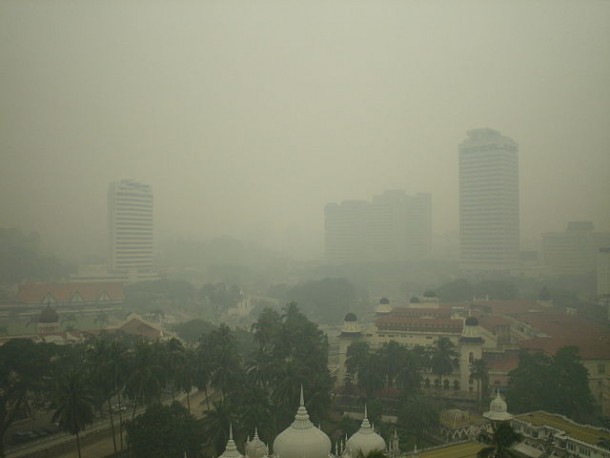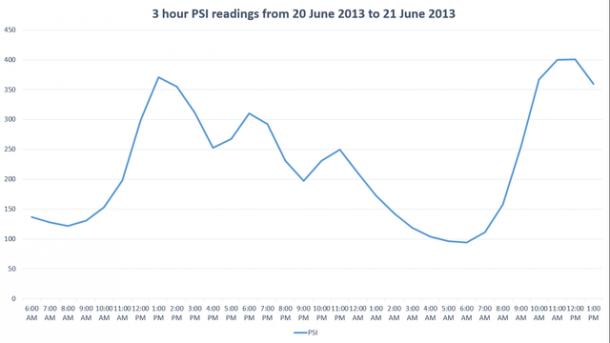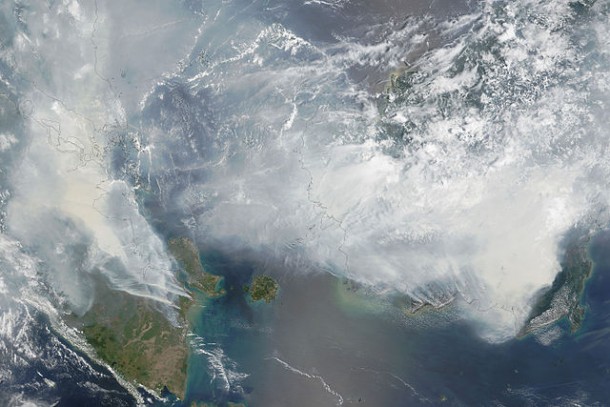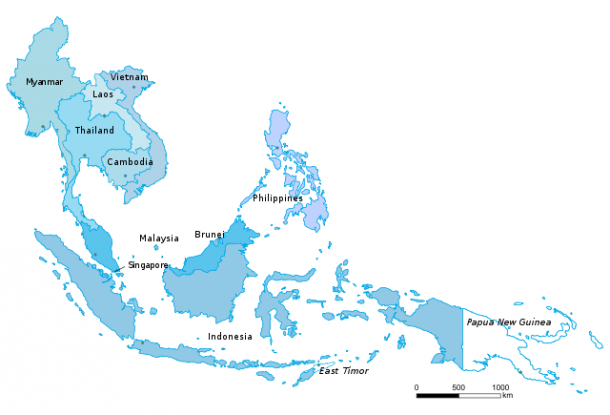This summer, the Southeast of Asia was engulfed in a thick, hazardous haze both unhealthy to the population and damaging to the economy. The smoke has taken over areas of Vietnam, Thailand, Indonesia, Malaysia, and Singapore. It is caused by large corporations and small-scale farmers using the “slash-and-burn” method (lighting illegal forest fires) to clear land for palm-oil and pulp plantations. These fires, lit in Sumatra and the Indonesian part of Borneo, result in extreme levels of pollution in neighbouring countries.
Economic Impact
Schools have been closed down in affected countries to protect citizens from the harmful environment. Sporting events – including a marathon in Kuala Lumpur with a scheduled 30,000 participants and a final event in the FINA Swimming World Cup in Singapore – also had to be canceled.
The haze costs governments of affected countries billions of dollars in lawsuits and lost productivity. This year, it will cost Indonesia $14bn in lost agricultural production, according to the Center for International Forestry Research. The Global Landscapes Forum Committee explained that the last large-scale episode in 2013 “almost paralysed Singapore, halting the nation’s economic activity for couple of days”. With the city-state as the second most competitive economy globally, the region simply cannot afford this.
Health Concerns
Beyond its economic impact, the haze is incredibly harmful to the environment and to human health. Pollution levels have been reported “hazardous”, or above a 300 in the Pollutants Standards Index (PSI) and Air Pollutants Index (API) used to measure air quality. In 2013, Malaysia declared a national state of emergency when a region in the South saw readings of over 750 API.
Despite masks being handed out in the streets and people being urged to stay indoors, Indonesia’s health ministry estimates 20m people have been affected by this year’s haze. Over 140,000 have reported respiratory infections. According to a World Health Organisation study, 3m people die prematurely each year as a result of air pollution. This is everyone’s problem: Indonesia is ranked as the 6th worst emitter of greenhouse gases globally.
Why is This Year Different?
The haze is nothing new, having become an almost-yearly phenomenon as numbers of illegal forest fires continue to rise. However, the 2015 episode is expected to be one of the most severe in history. Indonesia is usually one of the rainiest countries in the world, but this year’s “El Niño” – a weather phenomenon resulting in changed atmospheres and an overall drier climate – has reduced rainfall. The drier weather leads to particularly bad atmospheric pollution, and makes cloud-seeding to induce rain and clear the smoke more difficult.
The Source of the Problem
Everyone in Southeast Asia knows of the risks of the haze, but companies and farmers lighting the fires place their short-term economic interests first. According to Peter Holmgren, director of the Center for International Forestry Research:
Fire is the most cost-effective way of clearing, which is why it is done.
The mechanical clearing of land for agriculture costs $250 per hectare, compared to the $5 per hectare using “slash-and-burn” method.
The failure of the Indonesian government to stop illegal fires has been widely criticised and is causing tension between ASEAN member nations. Although ten Southeast Asian countries signed an agreement to monitor the issue in 2002, little has been done. Laws allowing to prosecute responsible individuals are not being enforced effectively – although this seems to be changing, with some companies held responsible paying millions of dollars in fines.
Yuyun Indradi of Greenpeace Indonesia blames the government’s corruption and close ties with the private sector for the failure to address the problem. Singaporean Taxi driver Savir Singh stated in a New York Times article:
I wish they had haze in Jakarta. Then the government there would do something about it.
Despite such criticisms Indonesian minister Willem Rampangilei claims “we have done the best we can”, and that although his country is largely blamed there are several Malaysian and Singaporean companies operating in Indonesia contributing to the haze. He argues Indonesia’s Southeast Asian neighbours profit from its status as the world’s largest palm-oil producer and so their finger-pointing is hypocritical.
What Can Be Done?
If change is to take place, Indonesia must pursue its efforts to prosecute and punish responsible individuals. Over 200 companies are currently being investigated – this is a good start, but not enough to prevent other illegal fires forever.
According to Ivan Png, economist at the National University of Singapore, financial incentives are necessary to encourage those with any information to come forward. He makes further proposals, like a certification system to help consumers identify safe producers. Png stated in a CNN article:
In developed countries, fair trade coffee and clothing has gained traction. We need to have the same certification for palm oil products and paper products.
Regardless of the benefits of such legal and economic changes, the best solution could only derive from cooperation. Sectors such as those of forestry and agriculture must work together – not in isolation, as they have been doing. This must take place on all levels: local, regional, and national. Cooperation is also necessarily between governments.
“Cross-border cooperation in the ASEAN region remains ‘not too well developed’”, according to a recent Deutsche Welle article. This is evidenced by Indonesia’s reluctance to accept help: when Singapore a Hercules plane and IT expertise to combat fires, it insisted it could do the job alone – despite few improvements being achieved over the past decade. With the worsening of the crisis, Indonesia has finally begun to cooperate with Malaysia, Singapore, and Australia. Countries working independently cannot solve the problem – but their joint efforts will achieve greater results. Southeast Asian nations can only combat the haze in the long-term is if they stop scapegoating and start to collaborate.





